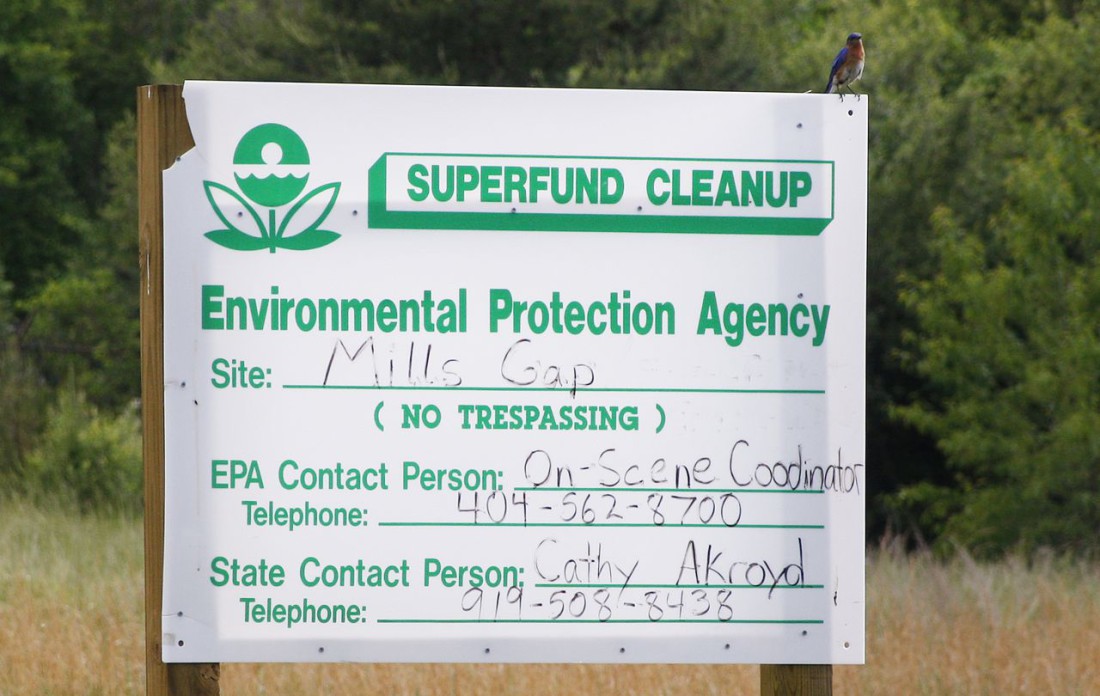It’s a “nightmare scenario” for residents living near or on land associated with the former CTS site south of Asheville on Mills Gap Road, according to a Dec. 29 Associated Press story that ran in the Charlotte Observer (“An Old Plant, tainted Land, and Worried Homeowners”). The story takes particular aim at the developers who purchased the more than 50-acre site in the late 1980s and built a residential project, Southside Village on part of it a decade later:
“By the time of that August 1997 meeting [with the local board of adjustment, developer Stanley] Greenberg and the partners had known about the contamination at the plant for a decade and were preparing to sell much of the land to [Richard] Green for development of a project called Southside Village, according to an Associated Press review of documents that reveal how a subdivision came to be built next door to what is now a Superfund site. Two years ago, the EPA named the 9 acres beneath and immediately around the former CTS Corp. factory among the nation’s worst abandoned hazardous waste sites.
In 2012, the U.S. Environmental Protection Agency added the property to its Superfund roster of most-contaminated sites. The AP story explores the fears and frustrations of Southside residents — how they weren’t told about the contamination when they purchased condos or land in the development; and how they’ve had difficulty selling their property since:
“‘Who’s going to buy property … next to a Superfund site?’ said Judy Selz, who did purchase 3 acres in Southside Village in 2006 — six years before the Superfund designation — and is one of dozens of land and homeowners worried now about whether it’s safe to live there.”
It also delves into that 1997 Buncombe County Board of Adjustment meeting where Southside plans were presented but the contamination issues were either downplayed or skirted: Developers Greenberg and Stanley Green claimed that state regulators were OK with the residential plans and that the Environmental Protection Agency had recommended no further action; but “The Buncombe County Board of Adjustment approved the plan without asking to see any documentation verifying [developers’] claims. … ‘We were duped,’ said [Dave] Ogren,” an alternate board at the time.
The AP also notes that executives of the Elkhardt, Ind.-based CTS “declined to comment.”
Local resident Tate MacQueen — who has long been a spokesperson for residents affected by the contamination — says the AP story is one of a series aimed at gaining national attention for the site and getting regulators do something that’s long overdue: Clean it up. He said in an email to others involved in fighting for action: “Let’s make 2015, the 25th anniversary of [the] EPA first learning that the disaster was migrating, the year we see accountability and an expedited clean-up!”
In the July 2007 article, “Fail Safe? A Short History of the CTS Contamination,” Xpress first covered the issue, tipped off by residents like MacQueen who had done (and continue to do) extensive research on the site.
For more stories about the CTS contamination, go to mountainx.com/tag/cts and mountainx.com/tag/ctsofasheville.
To view a timeline of the CTS case, go to http://www.timetoast.com/timelines/cts-contamination.
For documentation and more history, visit http://www.mountainx.com/xpressfiles/040908ctssite.



We got it going on when it comes to our tourism and beer branding. How about sustainability?